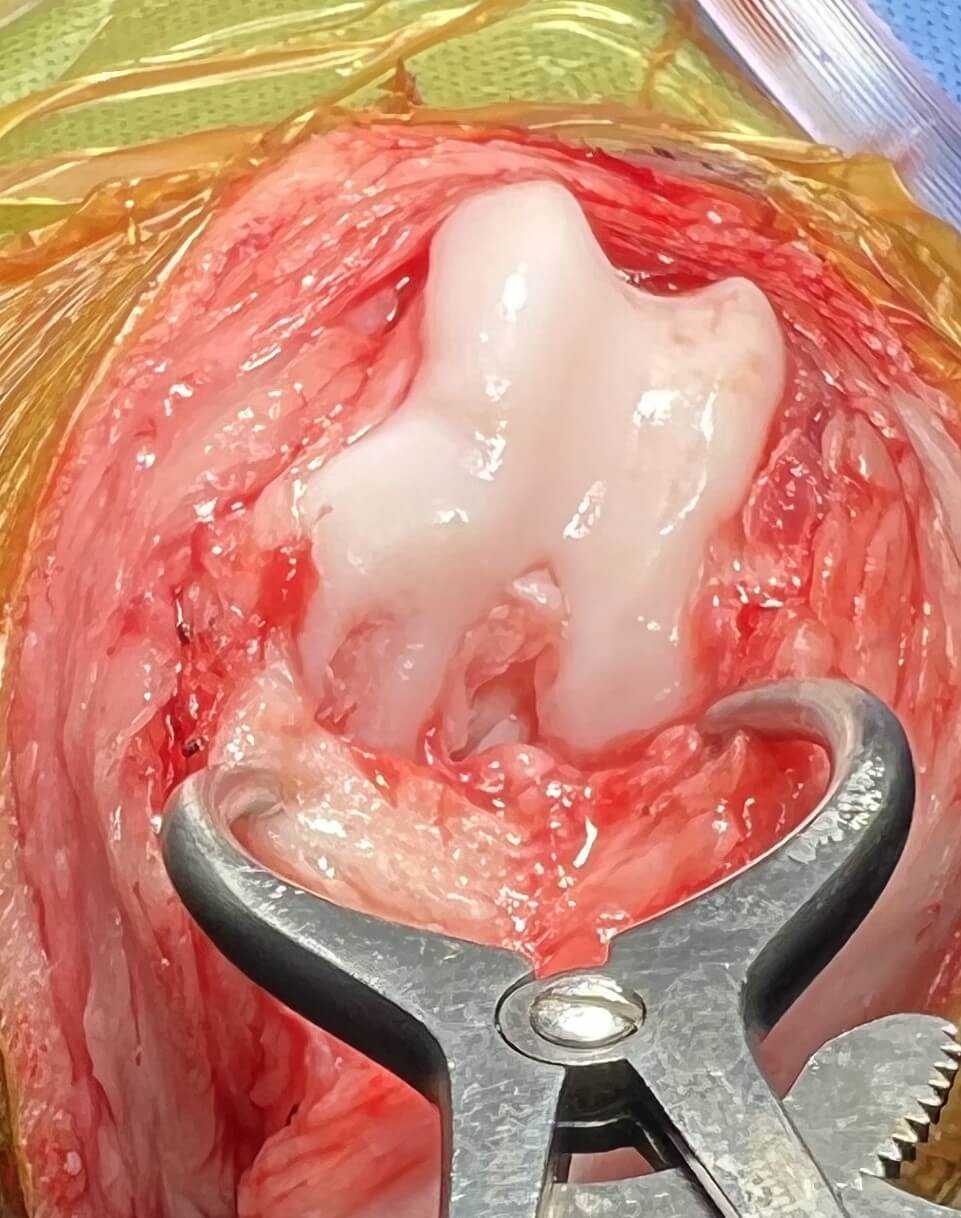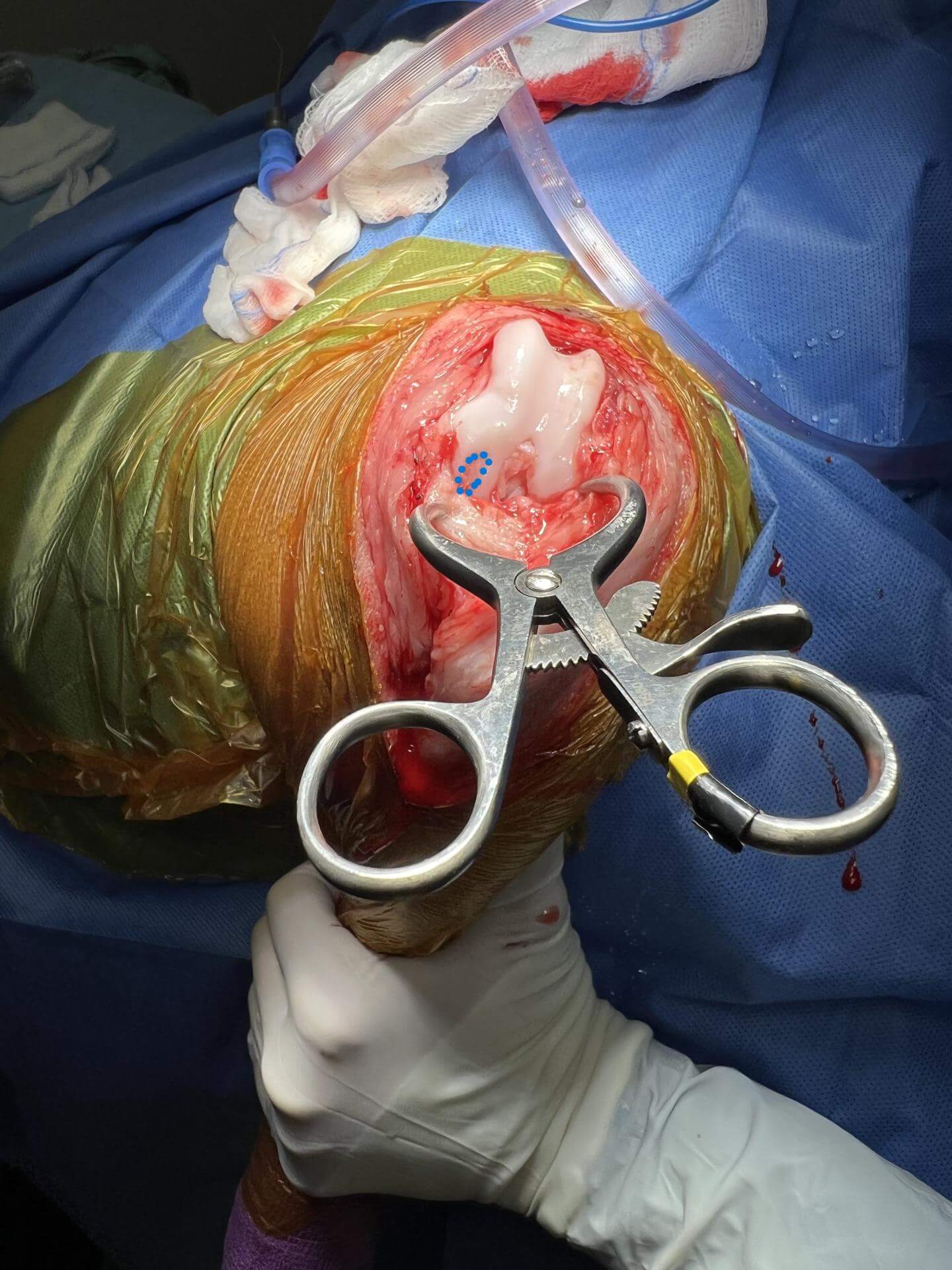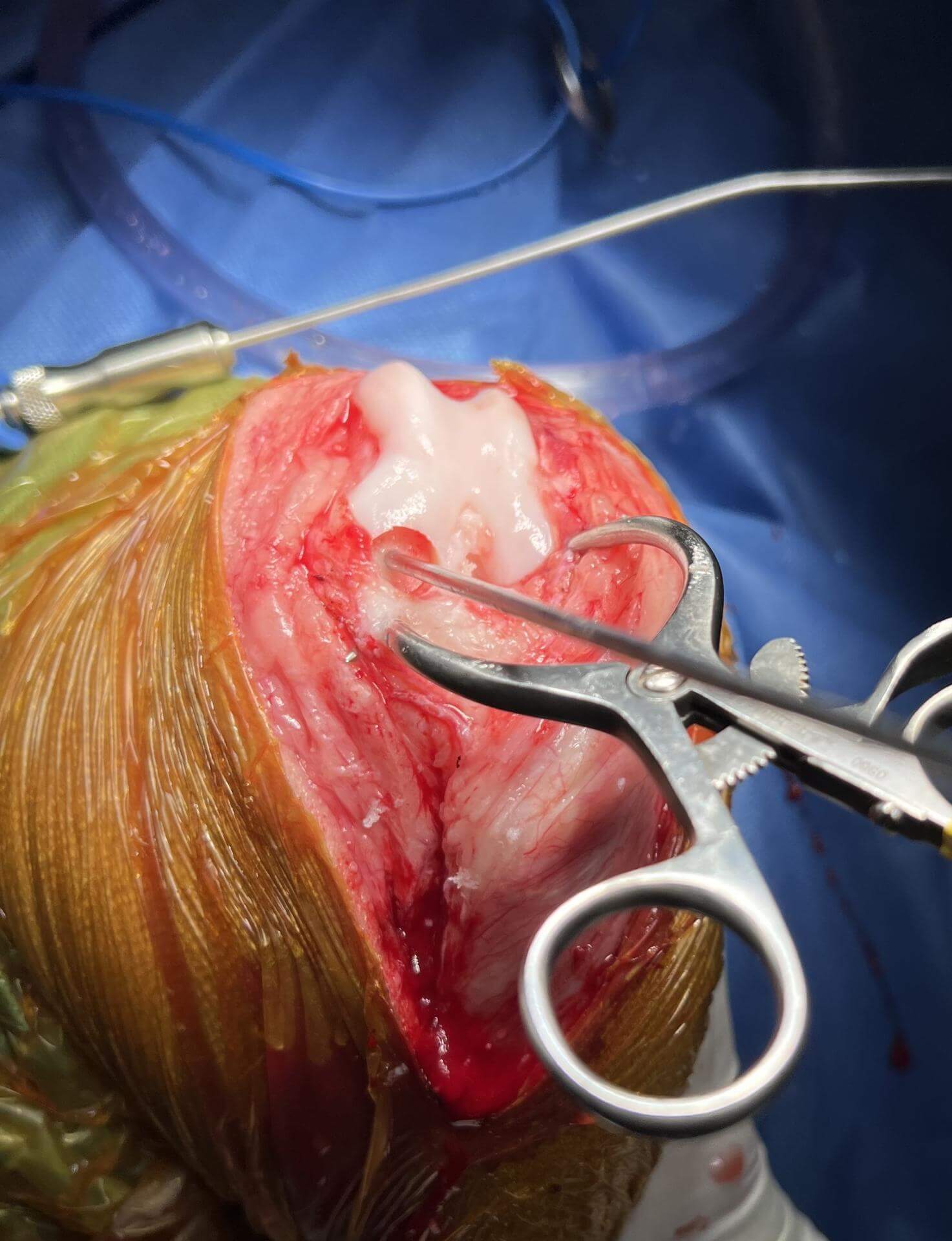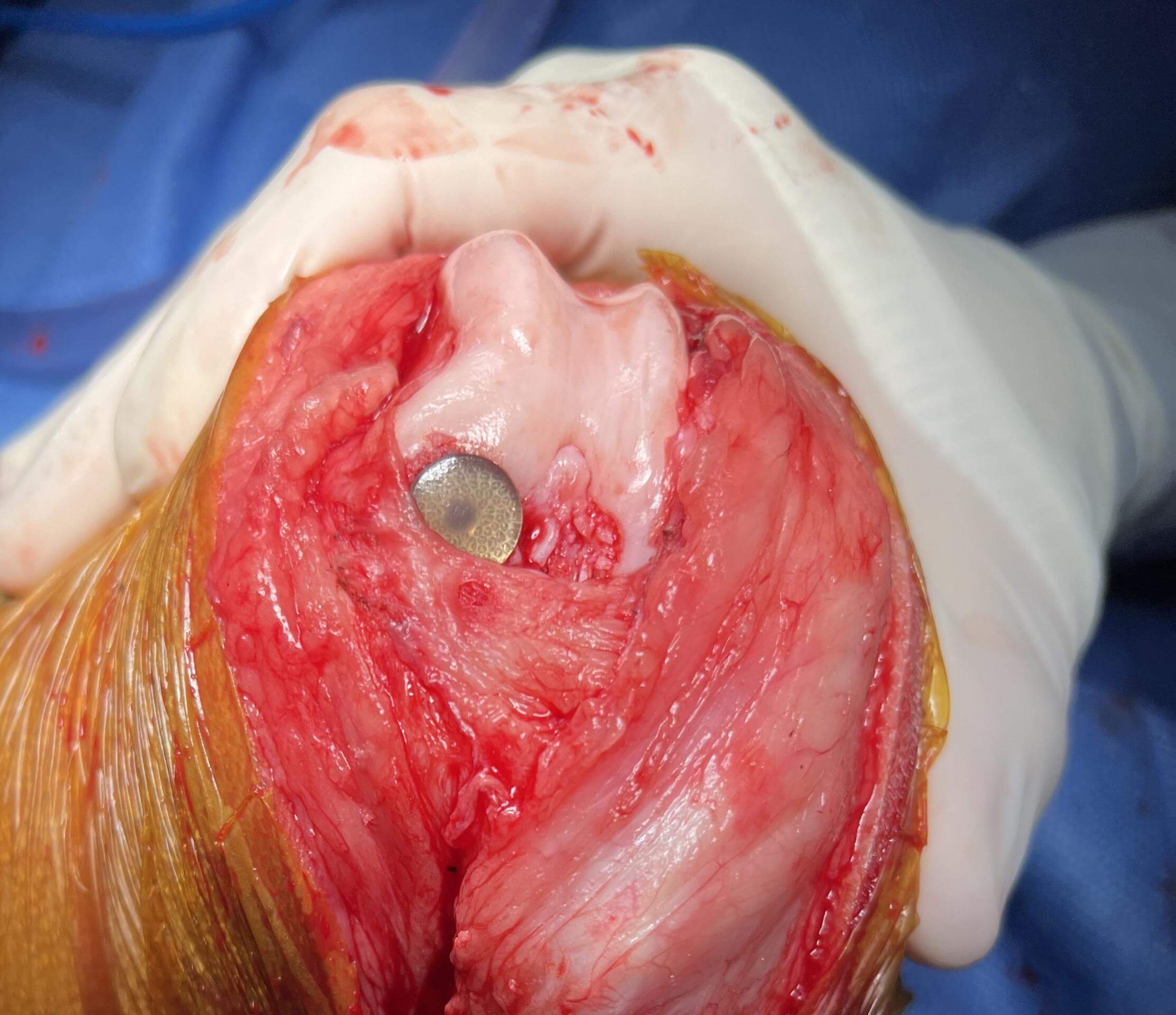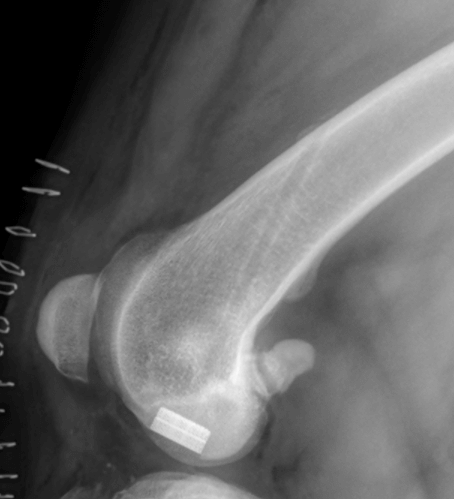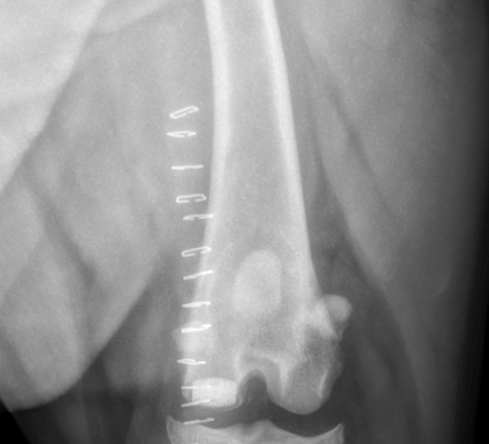What Is Osteochondritis Dissecans (OCD)?
Osteochondritis dissecans (OCD) is a developmental condition that arises due to a disturbance in the normal differentiation of cartilage cells resulting in failure of endochondral ossification (essential process during foetal development of skeletal system resulting in bone formation).
In dogs that grow very quickly, the rapid cartilage growth can outstrip its own blood supply causing abnormal cartilage development resulting in lameness, pain and subsequent osteoarthritis. In some cases, flaps of diseased cartilage become separated from the remaining cartilage surface. This is called osteochondritis dissecans.
Is There A Particular Breed Predisposition?
Genetic factors are the most important cause of OCD, with strong breed predispositions, particularly in Labradors and giant breed dogs. Different breeds appear to be predisposed to developing the condition in different joints. For example, the shoulder joint is most commonly affected in Border Collies, Great Danes and Irish Wolfhounds. Various other factors such as dietary or nutritional problems during the first few months of life, hormonal imbalances and joint trauma can also increase the risk of developing OCD.
How Do I Know If My Dog Has OCD?
Most dogs with OCD start to show clinical signs before they are one-year-old, although occasionally (particularly with shoulder OCD) signs may present when your dog is older. The clinical signs are variable and depend on the joint affected and the size of the cartilage defect. The most common signs include lameness, stiffness, joint pain or swelling, reluctance to exercise or play, or general depression.
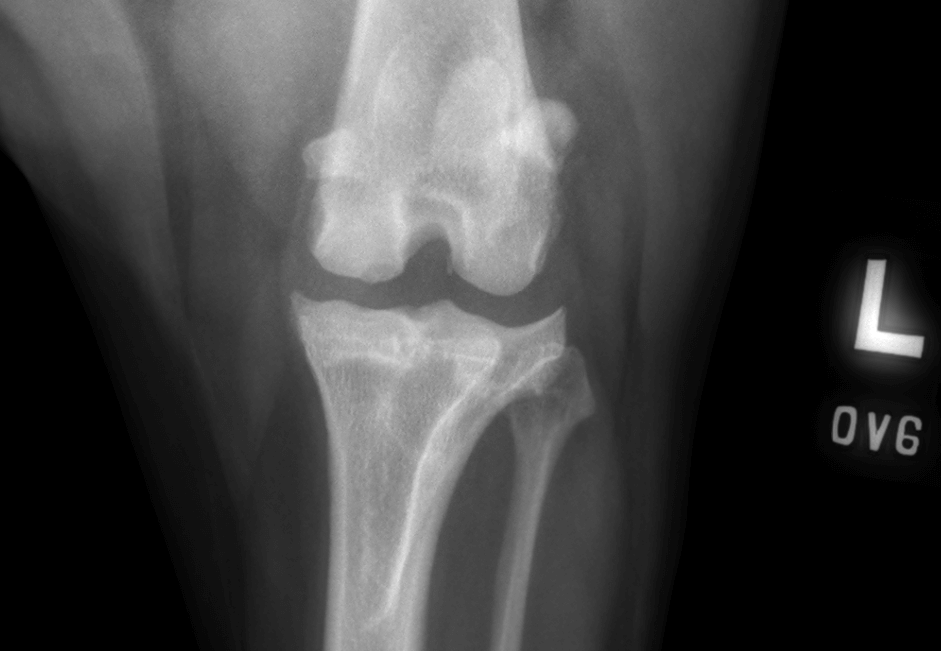
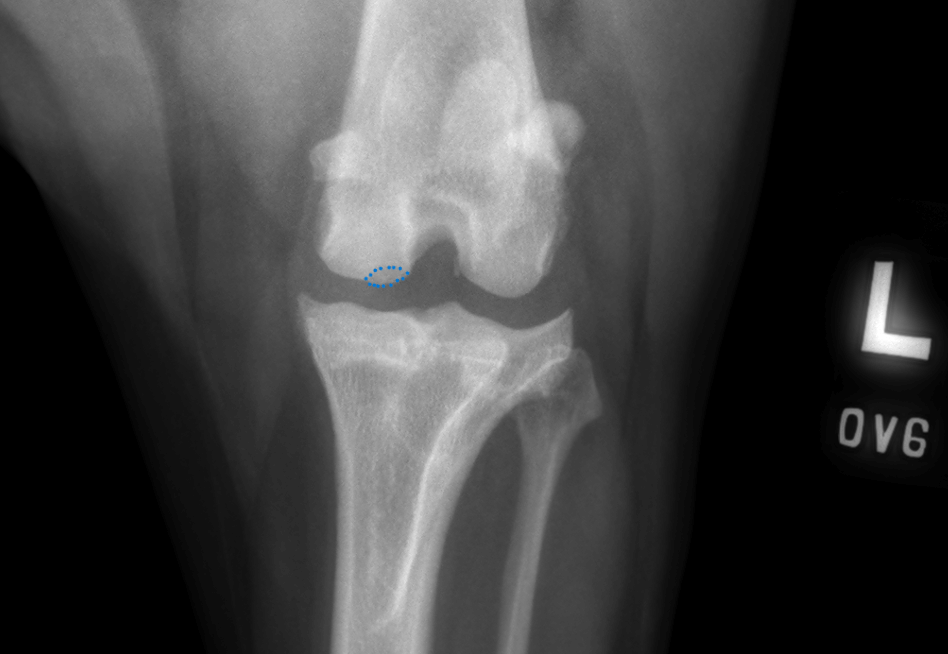
OCD lesion of the canine stifle highlighted with a blue dotted line.
How Is Stifle OCD Diagnosed?
OCD is typically diagnosed following a multimodal evaluation process. Firstly your dog will be examined. Following this, your dog will be admitted to the hospital to allow radiographs of the affected joints under sedation or general anesthesia. Because OCD can occur at the same time as other developmental orthopaedic diseases (such as certain manifestations of hip dysplasia), some dogs may require additional diagnostic imaging. Your dog will receive one-to-one nursing care throughout the process by one of our registered veterinary technicians (RVT), who are all highly trained and experienced in anaesthesia and sedation. Following diagnostic imaging, your dog may require surgery to allow surgery to be performed on the affected joint.
Will My Dog Develop Osteoarthritis?
As soon as OCD starts to develop, osteoarthritis (inflammation of the joint and associated bones) immediately starts to develop. Once present, osteoarthritis cannot be cured but can be effectively managed in most patients.
How Is Stifle OCD Treated?
Various treatment options are available for Stifle OCD. The best treatment option for each dog can only be recommended following thorough clinical, radiographic and arthroscopic assessment. Non-surgical management is occasionally appropriate for dogs with small cartilage defects and minimal discomfort, however, the majority of dogs are treated surgically. The following options are available:
Surgical Removal Of The Cartilage Flap
Certain types of small cartilage defects in specific locations are treated arthroscopically by flap removal and debridement of the defected bed. This allows the cartilage defect to heal by scar cartilage formation over a course of several weeks. Scar cartilage (fibrocartilage) is less robust than healthy joint (hyaline) cartilage so, although this allows some of the joint inflammation to resolve in the short-term, the joint will remain abnormal with ongoing development of osteoarthritis and cartilage wear. We currently recommend this surgery for very small or shallow disease lesions.
SynaCart
Manufactured by Arthrex, SynaCart™ represents the cutting edge of treatment for canine OCD. The implant is a second generation synthetic osteochondral resurfacing implant which incorporates the polycarbonate urethane of the SOR implant mentioned previously and combines this with a trabecular titanium metal which allows bone to grow into the implant. Synacart was developed by Arthrex in conjunction with Dr Noel Fitzpatrick who was one of Dr Ned Trathans mentors back in the UK.
